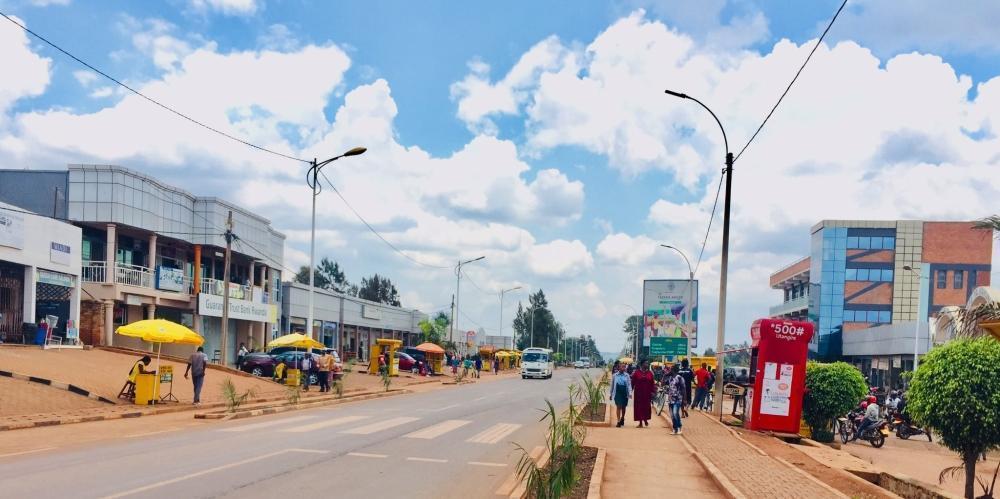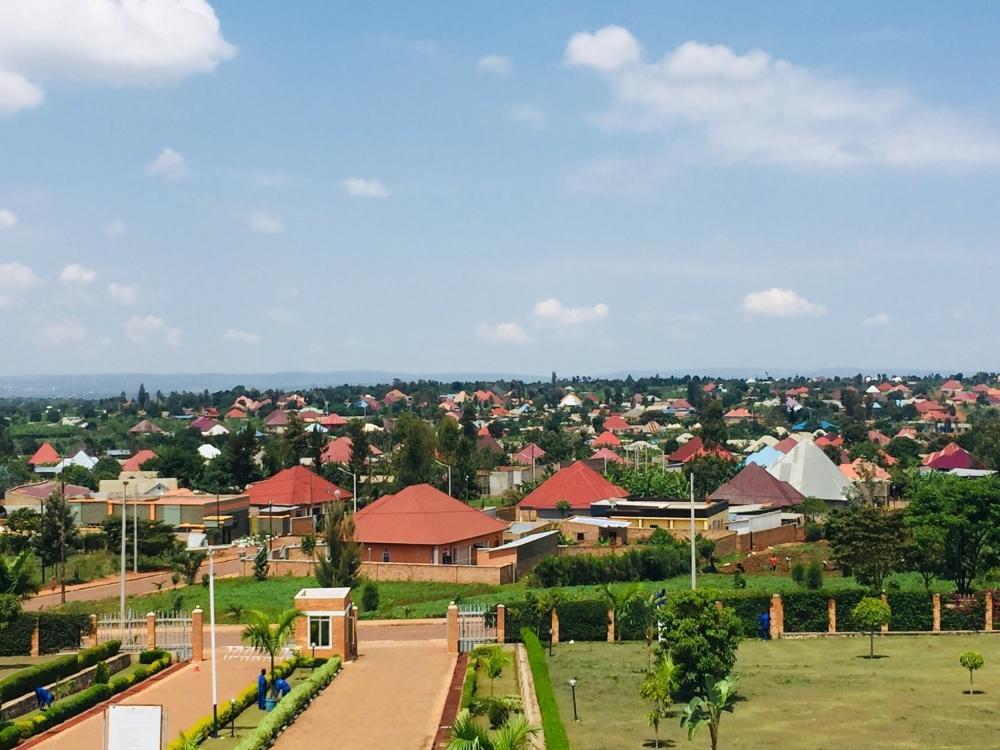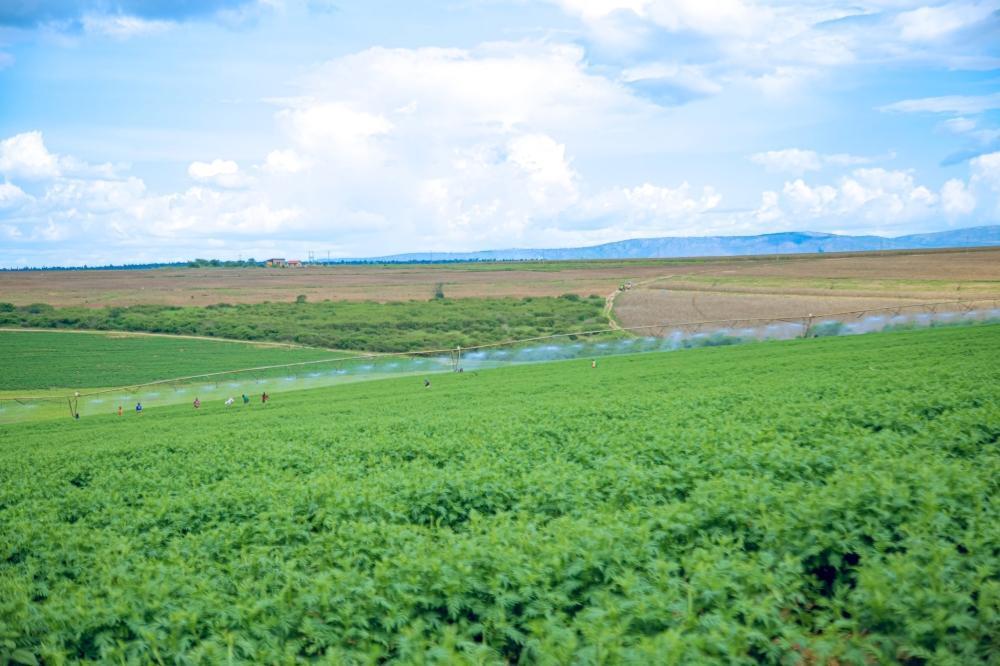Africa-Press – Rwanda. Kayonza District has achieved a major milestone in poverty reduction, slashing its poverty rate from 51 per cent in 2017 to 36 per cent in 2024.
The district made improvements, particularly in fighting stunting, access to education, mobile phone ownership, electricity access, and digital literacy, according to new data from the Seventh Integrated Household Living Conditions Survey (EICV7) released by the National Institute of Statistics of Rwanda (NISR). By and large, there is a growing trend in secondary school attendance and completion among young people, but challenges persist, the report notes.
According to the report, Kayonza’s youth unemployment and underemployment rates are still high, and fighting poverty is made more difficult by a high number of dependents and limited access to livestock, which are owned by only 62% of rural farming households.
During a dissemination meeting held on May 13, Ivan Murenzi, the Director General of the National Institute of Statistics of Rwanda (NISR), told local leaders—from village to district level in Kayonza who had gathered to unpack the EICV7 findings and commit to new strategies aimed at transforming livelihoods—that the district should put emphasis on creating more jobs for the working class.
He said: “The district still records a relatively high poverty rate above the national average and it is home to a large population of young children and elderly people who do not work. The working-age population is small, and many are not engaged in productive employment. Agriculture remains the dominant livelihood, employing 71.6 per cent of residents, yet 38 per cent of farming households still lack livestock—a critical asset for food security and income generation. There is a need to create more jobs for the working class, which is a national recommendation.”
The labour force participation rate in Kayonza is at 63.2 per cent, while the unemployment rate stands at 18.2 per cent. The report also indicates that underutilisation of labour remains high at 54.9 per cent, pointing to a need for deeper engagement of the working population.
Kayonza has the lowest population density in Eastern Province—338 people per square kilometre.
Speaking to The New Times, the Mayor, John Bosco Nyemazi, emphasised the district’s data-driven approach to grassroots development, particularly for youth and women as a tool for job creation.
He said: “We are especially focused on empowering young people and women by providing access to information and linking their initiatives to available funding opportunities.
“Matching grant programmes through the Business Development Fund (BDF) and other initiatives offer up to 70% support for youth and 50% for women. Job creation for our youth and women will help us meet our targets of reducing poverty rates.”
Kayonza cuts poverty rate by 15% in seven years midst small working population
Additionally, each year, the Vision 2020 Umurenge Program (VUP) supports more than 4,000 vulnerable households with Rwf720 million in cash and Rwf500 million in public work jobs.
For cooperatives, through Kayonza Irrigation Integrated Watershed Management Program (KIIWP), 480 small projects with $5,000 each will be funded, while bigger projects and those using natural resources can get up to $124,000. Officials say these funds aim to improve farming and strengthen rural communities.
According to Kayonza District Development Strategy (DDS), access to finance is key to having more transformed livelihoods for the residents. Currently SACCOs manage over Rwf11 billion in loans for 142,000 members, while the Business Development Fund (BDF) has so far injected Rwf2.2 billion into local business, while efforts are underway to increase numbers from 48,000 members in saving groups.
While agriculture remains the backbone of the district’s economy, officials say they have boosted support for the use of improved seeds to 72% of farmers, and irrigation reaches half of targeted beneficiaries.
Large projects like the Rwinkwavu Marshland and Ndego Centre Pivot systems are helping farmers grow crops year-round but also significantly employing thousands of residents.
In Ndego sector, PRODEV Kayonza, an agribusiness producing marigold flowers, French beans, passion fruits, and chilli—announced their commitment to promoting small livestock ownership among employees.
Mayor John Bosco Nyemazi emphasized the district’s data-driven approach to grassroots development, particularly for youth and women
“We employ over 700 residents daily in Ndego and neighbouring areas,” said Marie Louise Munganyinka, a representative of the cooperative. “We will collaborate with sector leaders to support our workers in starting small livestock projects and follow up on their progress.”
With over 450,000 people in 12 sectors, officials said they will keep reducing poverty by focusing on good governance, community involvement, and smart investment in farming, skills, and services.
For More News And Analysis About Rwanda Follow Africa-Press










